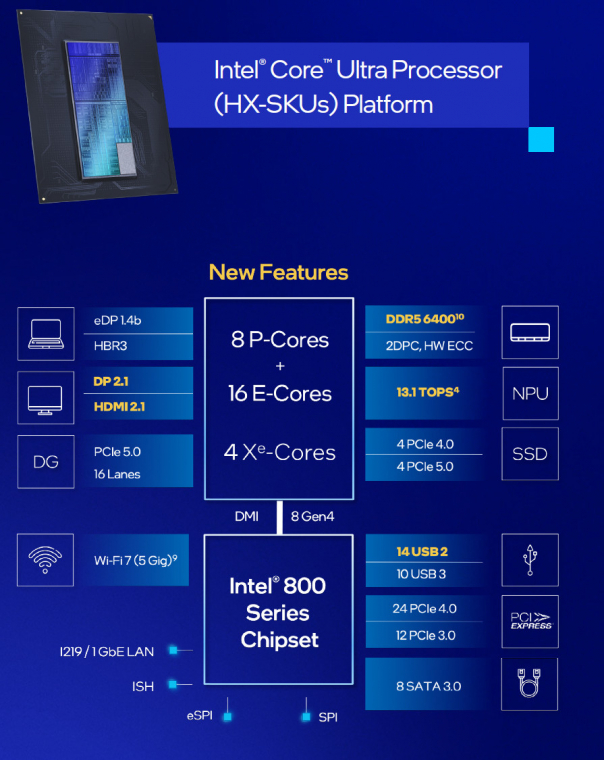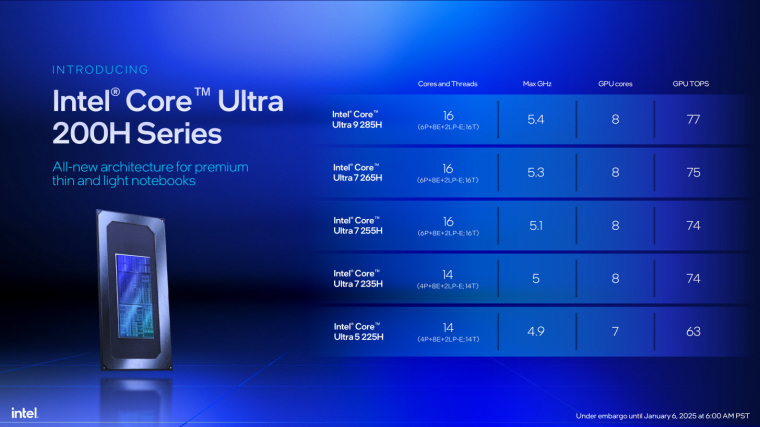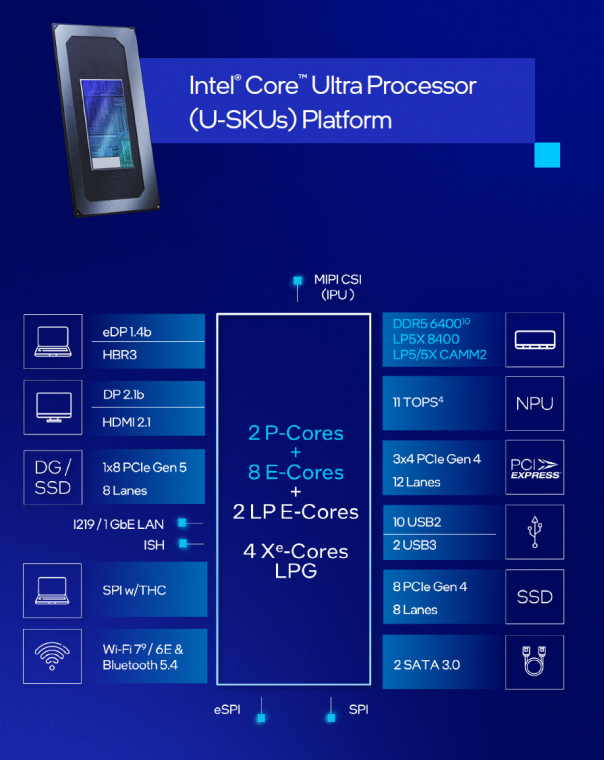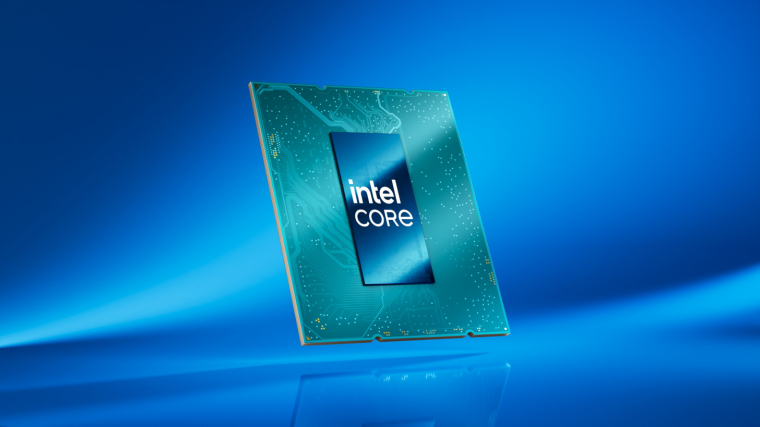In addition to the variants of Core Ultra for second-generation desktop and notebook platforms, there was also some talk about Panther Lake, which promises to be a milestone, coming in the second half of the year.
Rebuilding user trust is key for Intel, if they make good progress with this, there probably won’t be any particular problems with the investor side either. By the way, we wouldn’t have to highlight this so much if one of the world’s largest processor manufacturers had gotten rid of Pat Gelsinger, who was thought to be the messiah, just before Christmas.
It took some time for the waves caused by the CEO change to calm down, and the interim management was not only entrusted with daily and strategic tasks, but also figuring out what could be invented to replace the previous leadership charisma, which could be used to lay the foundation for the company’s product for the next 1-3 years and trading strategies. Michelle Johnston Holthaus, who was appointed to the shared CEO seat, opened the manufacturer’s presence at CES 2025 and assured the attendees that Intel will face the challenges of 2025 by touching on several segments in her presentation.
Arrow Lake is everywhere and for everyone
User opinions about the Core Ultra 200S desktop processors are still very mixed, many people like them because they managed to improve the performance of the Ks processors with some fine-tuning, but the disillusioned majority keep gaining weight and switch to the competitor’s successful platform. So for now, the code name Arrow Lake doesn’t sound very good, but Intel still believes that the product family’s reputation can be restored with mid-range and low-end solutions.
Let’s start right away with the editions intended for notebooks, of which the HX-marked models will once again be used in high-performance gamer and workstation laptops, expectedly in the company of an RTX 50 series GeForce. The structure of the CPUs is not much different from the desktop versions, the maximum number of cores will be 24 (8 P-cores + 16 E-cores), the integrated GPU is secondary, and the power consumption falls between 55 W and 160 W, the latter being the current available consumption ceiling.

What is an improvement compared to its predecessors, however, is that the development in manufacturing technology enables a thinner casing size, which can mean not only thinner designs, but also the integration of larger cooling modules into earlier frames. We have already seen that the desktop versions were not really able to crush the 13th and 14th generation predecessors, however, in the field of laptops the speed increase may finally come, but it is not worth expecting a miracle here either.
Ultra-slim range tuned for AI calculations
The top-speed HX models do not lack an integrated NPU either, and according to the data, the total computing capacity of the entire chip is below 100 TOPS, but users are expected to use the dedicated GPU for AI tasks. On the other hand, for the Core Ultra 200H and U series, the NPU and the integrated GPU will mostly perform the matrix multiplications, in the former case not so badly.

The Hs models come with the updated Arc Xe-LPG+ integrated graphics controller, with 8 Xe-cores very high performance can be achieved, and in idle state two so-called LP-E core provides high efficiency energy saving. With the E-cores organized in an 8+2 structure, the operating time of ultra-thin laptops can be outstanding, it was already possible to see with the Core Ultra 200V processors that their operation provides a spectacular increase in operating time. 6 or 4 of the P-cores are available depending on the configuration, and since the platform comes with WiFi7 and Thunderbolt 4 support, we are not expected to see these CPU types with a typical 28-45 W and a maximum consumption of 115 W in the entry-level laptops.

This may also be true for US editions, since the basic consumption reduced to 15 W is important for ultra-thin machines tuned for operation without a charger, primarily used for work, which also do not compete in the cheap category. Accordingly, the computing performance is also secondary, the design contains only 2 P-cores, to which the aforementioned 8+2 E-core cluster is connected. The integrated graphics here only uses the first-generation Xe-LPG cores, in exchange there is NPU and Thunderbolt 4 and WiFi 7 support.
K-free table group and a desired surprise
The Arrow Lake story is finally completed with desktop editions limited to the typical consumption of 35 and 65 W, after the top models the middle and low-end hybrid designs, mostly 6+8, 6+4 and 4+4 (P-cores + E- cores) design. Nothing particularly interesting happened, Intel broadened the desktop range, making the Core Ultra 200S available to the masses.

The Bartlett Lake-S series, codenamed Bartlett Lake-S, has been rumored for some time and has now become a reality. Let’s start with the fact that, in addition to the hybrid designs, the product line includes the Core team, which contains only P-cores and is set for three consumption frames, this time without the Ultra indicator. What’s rough is that the Core 9 contains 12 P-cores, which is by far the most that Intel has integrated into a processor so far. There are no E-cores, but we would like to see how these special versions perform during games.
The hybrids, which are admittedly based on the 12th generation Alder Lake and its Raptor Lake successor, look a bit like a warehouse sweep. Obviously nobody cares about this in an industrial environment, in any case, the manufacturer is currently holding 5 or so generations in the fire at the same time, and the partners can be faced with a very diverse offer.
This year, the panther will appear for good
Moreover, in the second half of the year, expected to be announced in September or October, the development codenamed Panther Lake, which finally uses Intel’s 18A production technology (also). So far, little is known about the new product, but the product line introduced as (let’s say) Core Ultra 300 could be a turning point.
Of course, AMD won’t rest until then either, we’ll soon be reporting on the competitor’s announcements.
Source: www.pcwplus.hu


